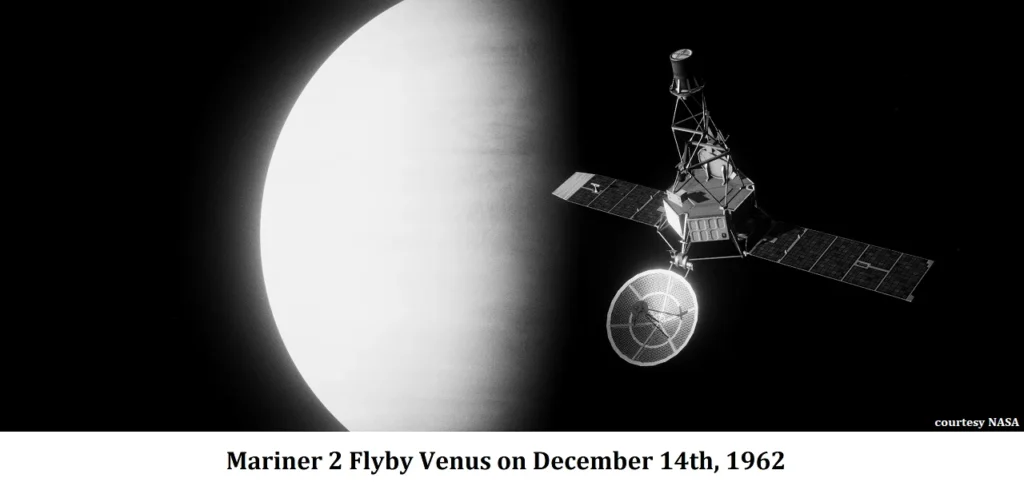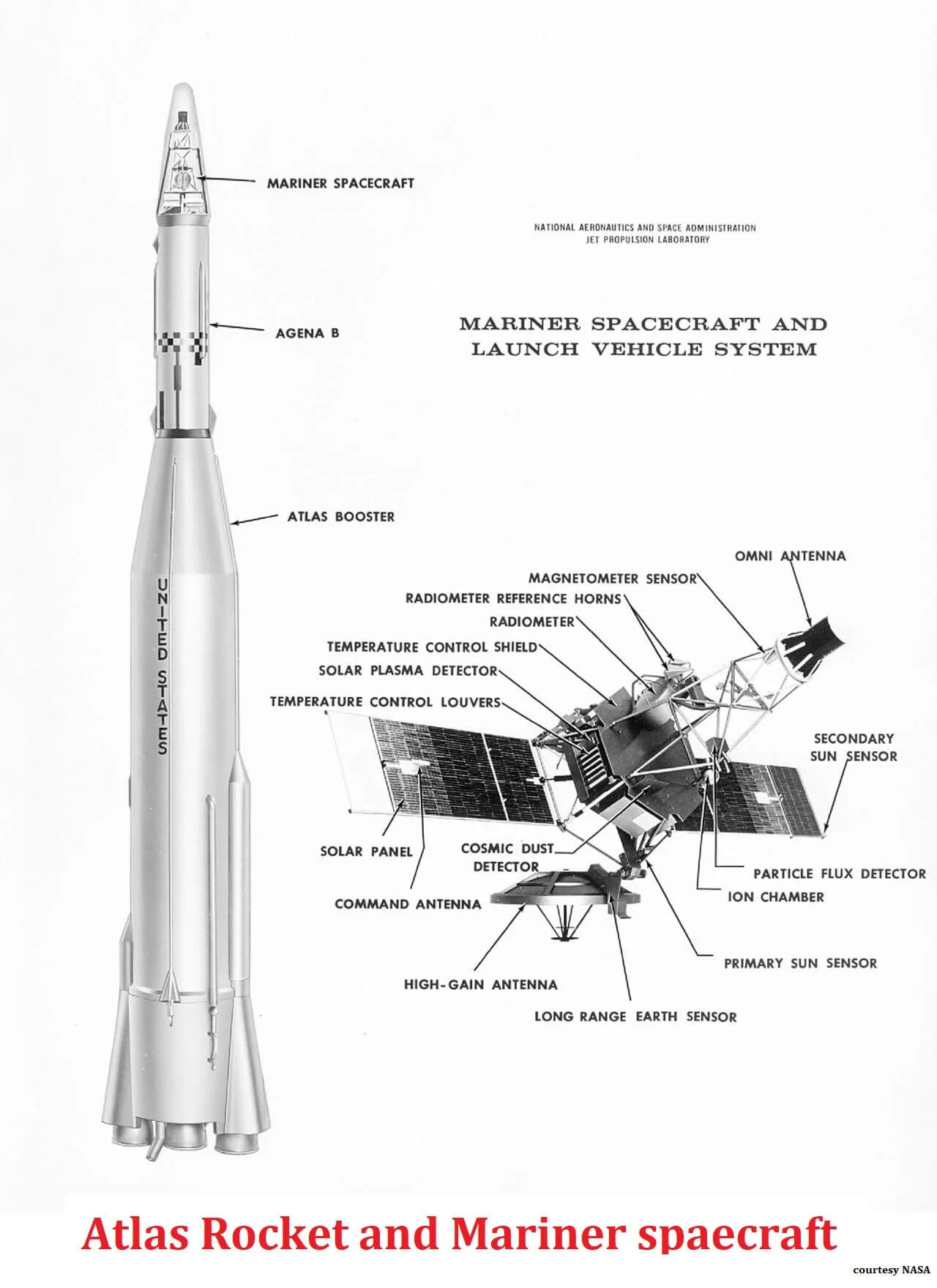
In the realm of space exploration, one mission shines as a beacon of human curiosity and scientific prowess – the remarkable Mariner-2 space mission. This mission was special as it was the first-time humans got really close to another planet, Venus. Mariner-2 success was full of discoveries that surprised the humans. The prior scientific understanding of the planets closer to Earth was significantly altered by this trip.
Mariner-2 on a Historic Odyssey
Imagine the anticipation as Mariner-2 embarked on its interplanetary journey on 27th August,1962. It was launched just 36 days after the unfortunate loss of its predecessor, Mariner 1. It was the time when the world was embroiled in the race to conquer the final frontier – space. There were not many changes in Mariner 2 as compared to Mariner 1. The spacecraft was equipped with the same scientific tools with the intention of revealing Venus’s secrets. But what it revealed was a sharp break from accepted wisdom.
A Surprising Encounter with Venus
Venus, once envisioned as a lush tropical world concealed beneath thick clouds, was unveiled in a wholly unexpected light. Instead of the temperate paradise imagined, Mariner-2 found a world of extremes through its instruments designed to study the Venus’s atmosphere and surfaces.
Venus proved to be not only scorchingly hot but also remarkably inhospitable, with temperatures far beyond any predictions. Mariner-2’s aim was to uncover these mysteries since the planet’s real nature has been hidden by a ‘thick blanket of clouds.
Mission Highlights and Journey
The momentous event occurred at 19:59:28 UT on December 14, 1962. At a distance of 21,660 miles (34,854 kilometers), Mariner-2 sailed past Venus, giving humanity an unheard-of front-row view of the wonders of another planet. During its flyby Mariner 2 got only 42 minutes to study Venus. In this crucial 42 minutes it was able to gather bulk of information about the Earth’s twin planet. The information collected by the spacecraft changed the entire approach towards the planet.

The heart of this data-gathering effort was the radiometers, which carried out a total of 18 scans, five on the night side, eight across the terminator and five on the daylight side of Venus. Mariner 2 and NASA continued to work together until January 3, 1963, when the spacecraft successfully traveled a record-breaking 53.9 million miles (86.7 million kilometers) beyond Earth, solidifying its status as a forerunner in deep space research.
Exciting Discoveries About Venus
Mariner 2’s mission brought for us exciting information about Venus and Space. Some of these findings were:
- The rotation of Venus which is backward on its axis was different from other planets.
- We also found out that Venus has super-hot surface temperatures and very high pressures, which is not like what we thought before.
- Additionally, we came to know that the atmosphere on Venus is mostly made up of Carbon Dioxide which is approximately 96%. This is one of the main reasons of it being too hot.
- It has thick clouds that go up about 60 kilometers.
- And unlike some other things in space, Venus doesn’t have a magnetic field that we can detect.
All of these discoveries helped us understand Venus and the universe better.
The Ingenious Mariner 2 Spacecraft
Intricately designed and technologically advanced, Mariner 2 was a wonder of engineering. A rocket engine, several electronics and attitude control gas bottles were all housed inside the spacecraft’s hexagonal base, which was 3.4 feet (1.04 meters) broad and 1.2 feet (0.36 meters) thick. It stood at an imposing height of 12 feet (3.66 meters), with science experiments affixed to a towering pyramid-shaped mast.

Mariner 2 has two solar cell wings. These wings were used to generate energy from the sun in order to run its operations. The spaceship’s survival while in the sun depended on these two solar panels, each measuring 72 inches by 30 inches (183 cm by 76 cm) and 60 inches by 30 inches (152 cm by 76 cm). Additionally, a solar sail was ingeniously incorporated to balance solar pressure on the panels.
Communication was established through a three-watt transmitter. It was facilitated by a large and small antenna that transmitted precious scientific data back to Earth. For maneuvering, Mariner 2 relied on a monopropellant (anhydrous hydrazine) 225 N retro-rocket, complemented by nitrogen gas jets that ensured the spacecraft’s stability.
Impact and Cost of the Mission
Mariner 2 was successful in accomplishing the mission for which it was designed and built. It added enormous amount of information to the knowledge of humans. Additionally, it paved the way for the future space missions such as the Voyager 1 and Voyager 2 in 1977. The whole Mariner series, including Mariner 1 to 10, cost about $554 million for research, making, launching and supporting them.
The was not only a spacecraft designed by human beings to study the celestial body and the space, but it also represented the dedication and hard work behind the mission. It has written a story with a moral that the determination of human beings can convert an impossible task into a successful one. With all these details I end my blog post today. I hope it was meaningful. Take care!
